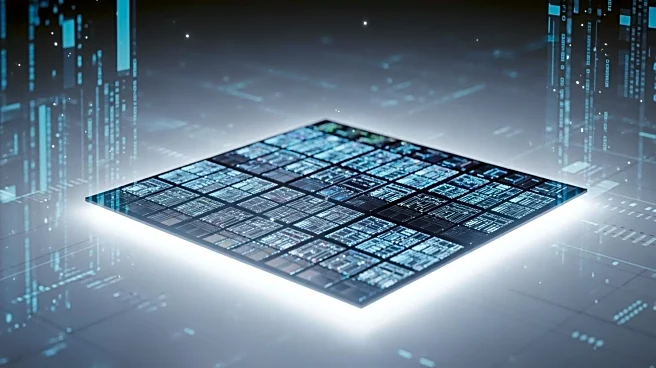What's Happening?
Researchers are investigating the use of optical skyrmions in photonic computing, focusing on their potential to improve data transfer and computation efficiency. Optical skyrmions, characterized by their integer-valued topological number, offer robustness
against noise and perturbations, making them suitable for high-density data applications. The study highlights the challenges in scaling photonic accelerators and managing noise, but emphasizes the promising properties of skyrmions for enhancing photonic computing. The research outlines possible solutions to manufacturing and integration hurdles, aiming to leverage skyrmions for power-efficient computing technologies.
Why It's Important?
The exploration of optical skyrmions in photonic computing is significant due to the growing demand for power-efficient computing technologies, driven by advancements in artificial intelligence and machine learning. Photonic computing, with its potential for high-dimensional information processing, offers a promising solution to meet these needs. The robustness of skyrmions against noise could lead to more scalable and efficient computing architectures, reducing the carbon footprint of data centers and supporting sustainable semiconductor manufacturing. This research could pave the way for innovations in energy-efficient AI chips and contribute to the development of carbon-neutral data centers.
What's Next?
Future research will focus on overcoming the challenges of integrating skyrmions into photonic computing systems, including addressing noise issues and scaling up photonic accelerators. Researchers plan to explore the limits of topological protection of optical skyrmions in the presence of random noise and investigate strategies for directly converting generalized skyrmions for optical computing. The development of structured matter to manipulate skyrmion numbers without external energy input is also a key area of interest, aiming to enhance the scalability and efficiency of photonic computing technologies.
Beyond the Headlines
The study of optical skyrmions in photonic computing could lead to long-term shifts in how data is processed and transferred, potentially revolutionizing computing architectures. The ethical and environmental implications of reducing the carbon footprint of data centers are significant, aligning with global efforts to combat climate change. Additionally, the research highlights the importance of interdisciplinary collaboration in advancing photonic technologies, combining insights from physics, engineering, and computer science to address complex challenges in semiconductor manufacturing.













